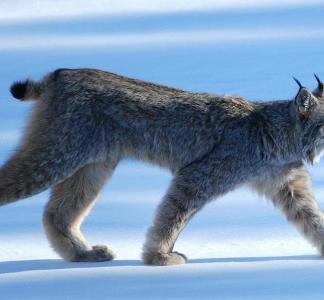Mason Cummings, TWS
Preventing development from harming a precious desert landscape
Southern Nevada’s portion of the Mojave Desert is a beautiful place where Joshua tree forests dot remote bajadas or slopes and are surrounded by mountain ranges rising thousands of feet above. These desert lands provide critical habitat for the endangered Mojave desert tortoise, which has roamed the area for millions of years.
Central to this landscape, the Wee Thump Joshua Tree Wilderness has some of the densest old-growth Joshua tree forests in Nevada. The Wee Thump is surrounded by desert mountains including the McCullough Range, Highland Range, New York Mountains and Lucy Gray Mountains.
Some of this magical landscape is permanently protected as federally designated wilderness, and some has been identified as worthy of such protections. The irreplaceable values of these lands are at risk to mining and energy development as well as off-road vehicle (ORV) driving on sensitive areas that have not been designated for such use.
Nevada’s Mojave Desert holds rich cultural history and wildlife habitat. It harbors protected species such as golden eagles and desert tortoise, as well as bighorn sheep that rely on a connected landscape to move among the mountain ranges.
The threat
The Mojave Desert Mountains and their native plants and animals are threatened by poorly sited energy projects, mining and uncontrolled off-road vehicle use. The Bureau of Land Management (BLM) is currently developing a long-term management plan for our public lands in southern Nevada, which could leave these special places at risk to habitat fragmentation and permanent destruction of their wild characteristics.
The Wilderness Society is working to ensure these lands, filled with amazing scenery, backcountry recreation opportunities and important plant and wildlife habitat, are conserved for future generations. We are getting out on the ground to identify the wildest places and advocating for protection of areas like the New York Mountains, with its ancient Joshua trees and stunning views of the Castle Mountains.
What we're doing
-
Identifying more places to conserve
We're working with the BLM and local communities to identify important places that should be conserved in the Mojave Desert and ensuring that long-term management plans protect those places.
-
Documenting for future protections
We are cataloging public lands for wilderness characteristics to be able to document and point to these lands for future protections.
-
Standing up to development
We’re fighting development proposals that threaten the wildlands, native plants and animals in southern Nevada’s Mojave Desert.



